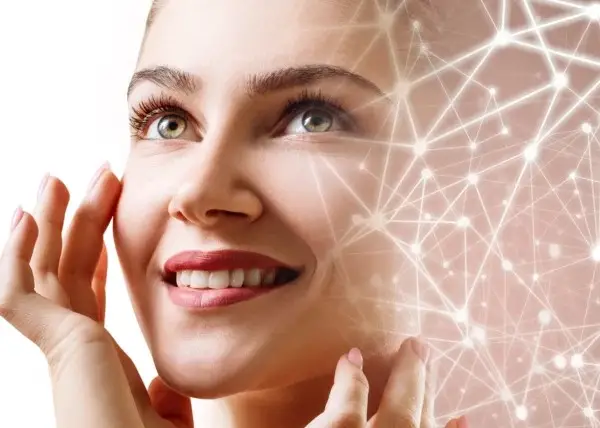As competition intensifies and digital-native consumers dominate the market, beauty brands face a critical crossroads: evolve with technology or risk being outpaced by faster, smarter competitors.
Artificial Intelligence (AI) is rapidly becoming the backbone of personalization, product innovation, and consumer engagement across the beauty industry. It’s reshaping how brands innovate, personalize, and grow.
And with AI in beauty expected to reach $6.8 billion by 2027, now is the time to act or risk falling behind.
Key takeaways:
- AI is no longer optional for beauty brands – it’s a core driver of personalization, product discovery, and customer loyalty.
- AI tools such as virtual try-ons, shade finders, and face shape detection are already delivering measurable ROI by increasing conversions and reducing returns.
- Phygital strategies combining in-store and online AI tools are becoming essential to meet Gen Z and millennial shopping expectations.
- Emerging AI technologies are reshaping how brands develop, market, and deliver beauty products.
- Current landscape: AI in beauty
- Virtual makeup try-ons: From gimmick to growth driver
- AI-driven skin tone analysis
- Decoding your face: The face shape detector
- Phygital beauty: Bridging online convenience and in-store experience
- Emerging technologies and the future of AI in beauty
- AI in beauty: A strategic opportunity for forward-looking brands
Current landscape: AI in beauty
Artificial intelligence is rapidly reshaping the beauty industry, redefining the consumer experience.
While AI’s application in various industries has seen steady growth, its interplay with beauty is particularly striking. PwC’s Global Artificial Intelligence Study revealed that AI could contribute an additional $15.7 trillion to the global economy by 2030. Of this, a significant fraction is expected to come out of retail sectors, including beauty.
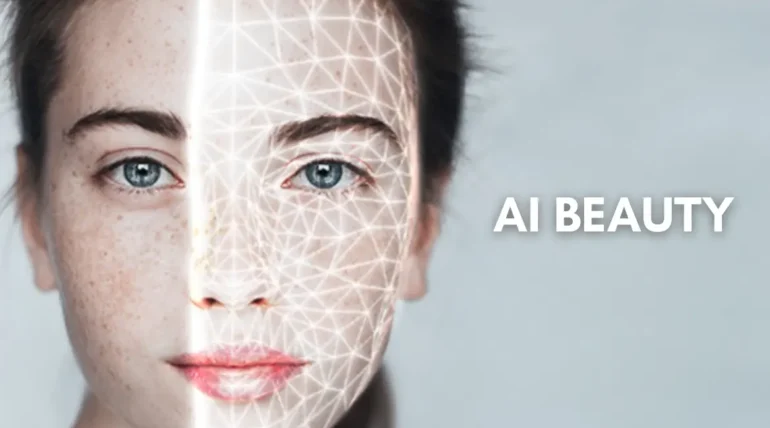
Today’s consumers, particularly Gen Z and millennials, are digitally savvy, demanding more immersive and personalized experiences. Recognizing this, beauty brands have raced to incorporate AI into their strategies.
The numbers also paint a bright picture: a study revealed that the global AI in the beauty industry market was valued at $2.68 billion in 2022. And it’s predicted to grow at a compound annual growth rate (CAGR) of 14.4% from 2022 to 2027.
Such great growth isn’t merely due to the novelty factor but is backed by tangible benefits. For instance, AI-driven personalized recommendations can result in increased sales and brand loyalty. A study conducted by McKinsey & Company shows that 76% of consumers are more likely to purchase when provided with personalized recommendations, and 78% are more likely to re-purchase, as well as recommend your company to friends and family

In essence, the current landscape isn’t just about AI in beauty—it’s about an industry being revolutionized, driven by consumer demands, technological prowess, and a desire for innovation. The seamless blend of AI with beauty is undoubtedly more than just a fleeting trend; it’s a transformative journey that promises to make the beauty experience richer, more personalized, and deeply interactive.
Now, let’s take a look at some of the main applications of AI in the beauty industry, and explore what the future holds for it.
Virtual makeup try-ons: From gimmick to growth driver
The incorporation of AI in the beauty industry isn’t new. What began as a pandemic-era convenience has quickly become a key conversion-driving tool in beauty brand strategies. Virtual makeup try-ons are now expected.
Today’s consumers want more than static product photos or swatches – they expect immersive, accurate try-on experiences that match their exact skin tone, face shape, and preferences. Brands that meet this expectation not only improve customer satisfaction but also see measurable gains in performance metrics.
Consider this:
- Tarte Cosmetics reported a 200% sales increase after integrating a virtual try-on tool.
- Beauty brands using AR try-ons report up to 64% fewer returns, cutting costs and improving customer trust.
- 76% of consumers say they’re more likely to purchase when offered personalized recommendations.
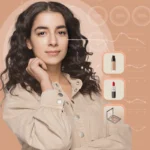
➥ Want more data like this? Check out our Cosmetics Industry Report for the latest trends, stats, and strategies shaping beauty tech in 2025 and beyond.
Arbelle’s virtual makeup solution addresses these demands with unmatched realism and speed. Its ultra-precise face tracking, powered by 150+ facial points, delivers real-time AR makeup application that moves naturally with the user, creating a “mirror-like” experience on any device.
For beauty brands, this isn’t just a digital feature – it’s a scalable way to drive conversions, build loyalty, and eliminate friction in the customer journey.
AI-driven skin tone analysis
Accurate skin tone matching has long been a challenge in cosmetics. Traditional shade ranges often fall short of covering the full spectrum of skin tones, leading to poor customer experiences, lost sales, and a lack of inclusivity.
AI is changing that – fast.
Advanced skin tone analysis tools now allow brands to detect subtle skin nuances in real time. By analyzing each customer’s unique complexion, AI can recommend foundations, concealers, and other complexion products that actually match.
This not only builds consumer trust but also directly impacts sales performance and reduces return rates.

For beauty brands, the value is clear:
- Improve first-time match accuracy and reduce costly trial-and-error.
- Create inclusive product journeys that resonate with underserved demographics.
- Collect anonymized tone data to inform future shade development and inventory decisions.
And that’s exactly what Arbelle’s Shade Finder delivers. Built to deliver instant, high-precision foundation matching, the Shade Finder analyzes the user’s face in real time, giving highly personalized and accurate product matches.
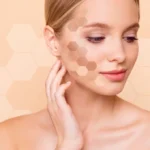
➥ Explore how the Shade Finder works in our detailed guide: Virtual foundation shade finder: A complete guide for beauty brands
In an industry where one shade doesn’t fit all, such tailored suggestions can be game-changing for individual, personalized beauty needs.
Decoding your face: The face shape detector
Understanding a customer’s face shape has long played a key role in beauty consultations and makeup application – from contouring and eyebrow styling to haircut recommendations. But until recently, it required manual input or lengthy quizzes that many users found frustrating or simply skipped.
With AI-powered face shape detection, that friction is gone.
With a quick analysis of facial features, these smart algorithms swiftly pinpoint a customer’s face shape, paving the way for streamlined product choices and personalized recommendations.
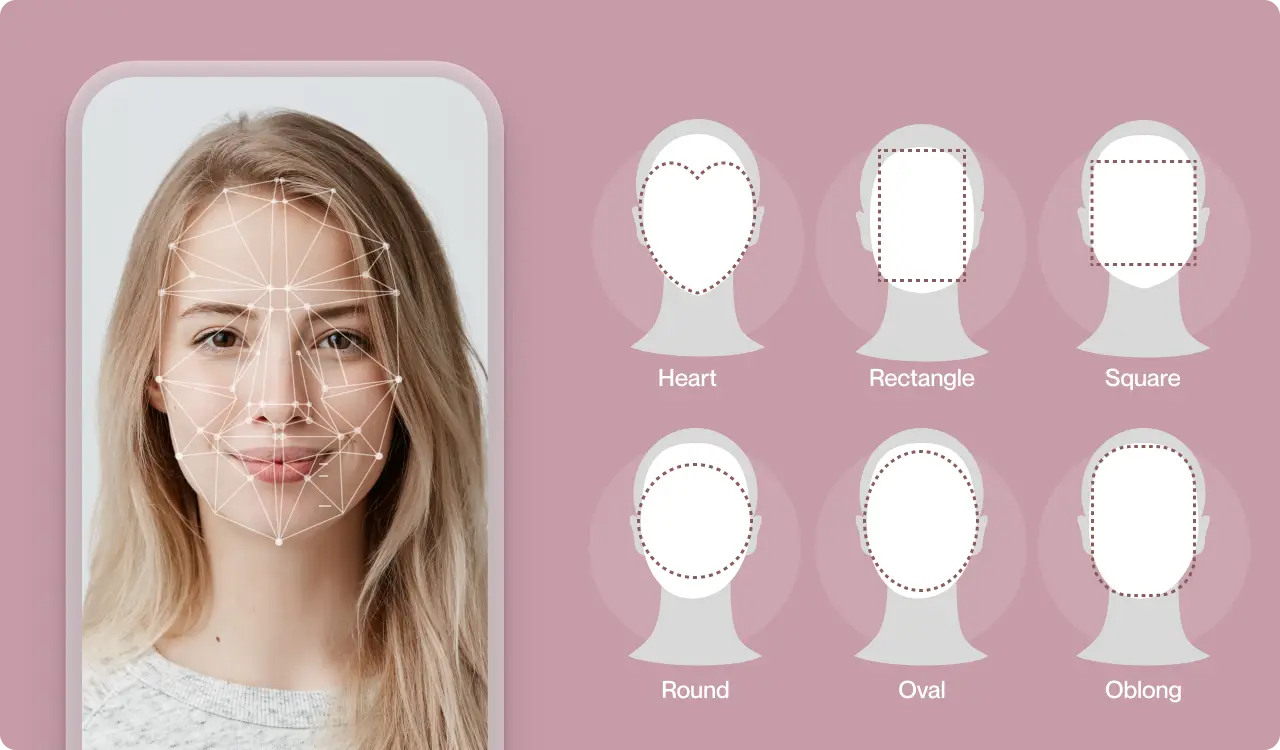
Using advanced facial analysis, Arbelle’s upcoming Face Shape Detector identifies the customer’s face shape instantly and accurately. No surveys. No guesswork. Just data-driven insights that enable highly relevant product suggestions – from the best contouring palettes and blush placement to personalized looks and tutorials.
For beauty brands, the impact is tangible:
- Data-backed marketing: Segment audiences by facial features to personalize offers and campaigns
- Better product discovery: Tailor recommendations to each user’s face structure
- Increased engagement: Help users feel seen with content that actually fits them
Phygital beauty: Bridging online convenience and in-store experience
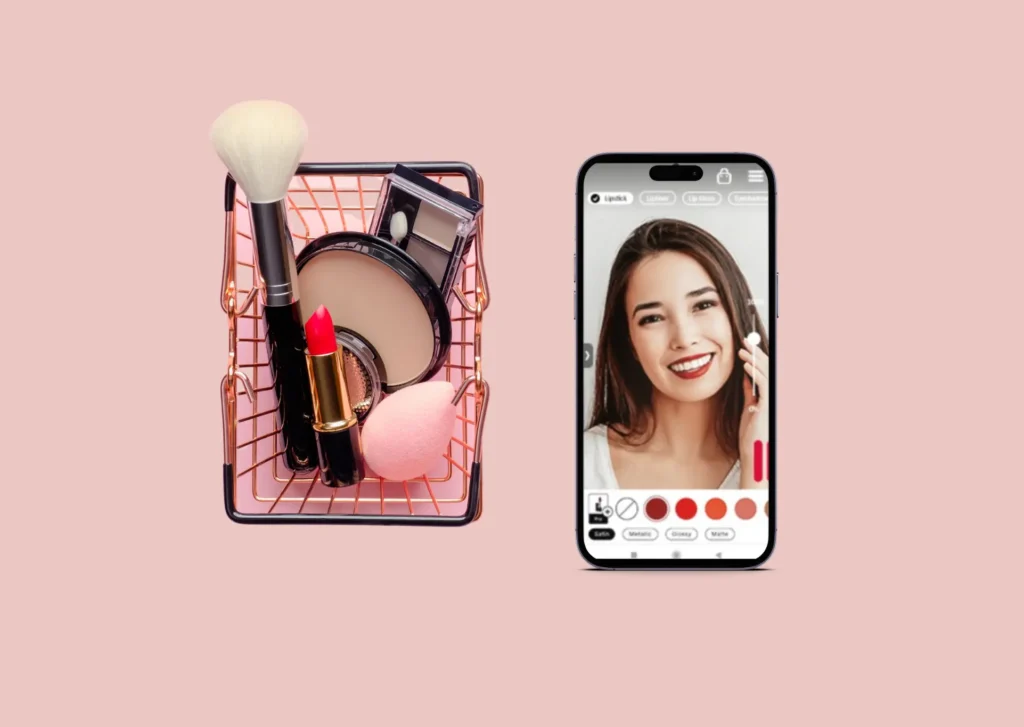
As consumer behavior continues to shift, the most successful beauty brands aren’t choosing between e-commerce and retail – they’re blending both into a unified, phygital experience.
Phygital beauty combines the tactile nature of in-store shopping with the speed, convenience, and personalization of digital tools like AR-powered virtual try-ons. It empowers consumers to test products digitally before buying in-store, receive shade-matching recommendations on the go, or build personalized shopping lists they can bring to a physical location.
Whether it’s through smart mirrors, mobile experiences, or integrated apps, phygital is removing that friction in the shopping journey, especially for Gen Z and millennial shoppers.

➥ Read our full guide: Phygital beauty – What it is and how to make it work for your brand.
Emerging technologies and the future of AI in beauty
The fusion of AI and beauty goes beyond virtual try-ons and personalized product recommendations. As we stand on the precipice of new technological advancements, the beauty sector’s scope and horizon are broadening at a pace previously unimagined.
Let’s explore some of the trailblazing technologies and the prospective future they promise for the world of AI in beauty.
➥ Generative AI: The pioneering wave in beauty
When we discuss emerging technologies, generative AI cannot be overlooked. But what is generative AI? In essence, it’s a type of AI that can create content from scratch, be it images, sounds, or even textual narratives.
And in the realm of beauty, generative AI also is – or will become – a very significant tool. Basically, this technology should have the capability to analyze skin images and then assess its condition, detect specific concerns, and offer tailored skincare regimens. In addition, it could also show the potential long-term skin benefits from using specific skincare products.
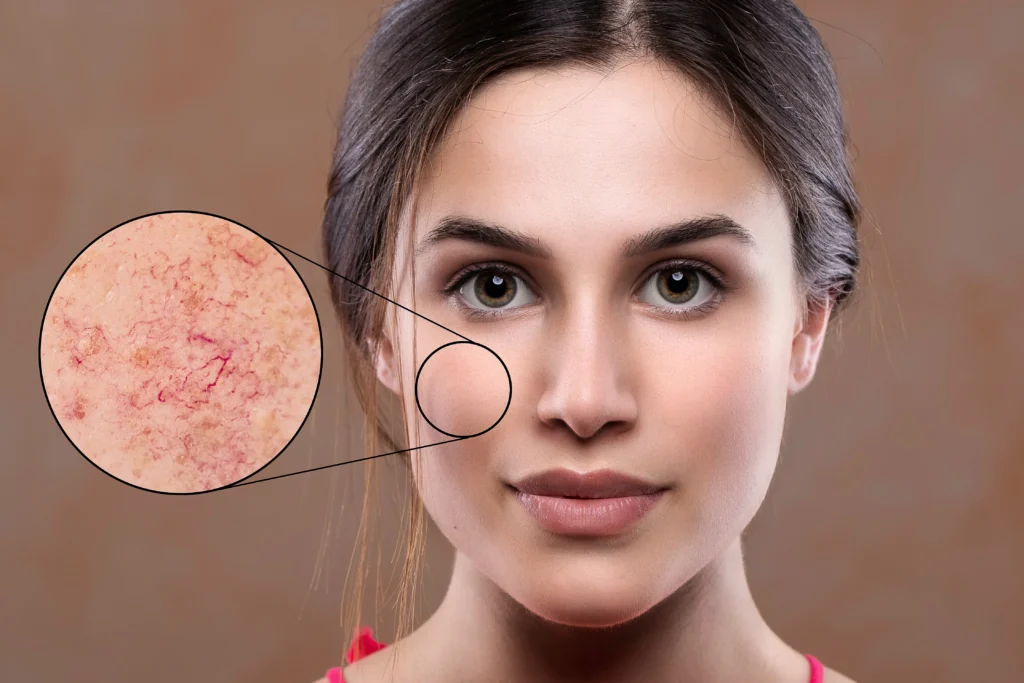
So, for companies that integrate this feature into their consumer experience, AI can continuously learn and adapt its recommendations based on user feedback and emerging beauty trends.
➥ AI-driven sustainable beauty
With an increasing emphasis on sustainability, AI is gearing up to guide consumers towards more eco-friendly choices. In addition to making product packaging more environmentally friendly, reducing the number and size of the packaging, and turning to virtual try-ons as an alternative to physical testers, AI is leading the industry a step further.
Using extensive databases on ingredients, AI is revolutionizing the beauty industry by suggesting sustainable product formulations. AI-powered algorithms can analyze the environmental impact of a product’s ingredients and suggest more eco-friendly alternatives. This ultimately helps brands craft products that are kinder to our planet.

➥ 3D printing and formulation
In a world seeking bespoke experiences, why should beauty products lag? AI-driven 3D printers are on the horizon, which can concoct personalized makeup products right in front of consumers. Based on skin analysis, these machines might soon provide tailor-made lipsticks, eyeshadows, or even skincare serums – ensuring the product is as unique as the individual.
One such example is Mink, which introduced the world’s first 3D makeup printer. This innovation has not only personalized makeup to match individual personalities but also transformed consumers into their own makeup creators.
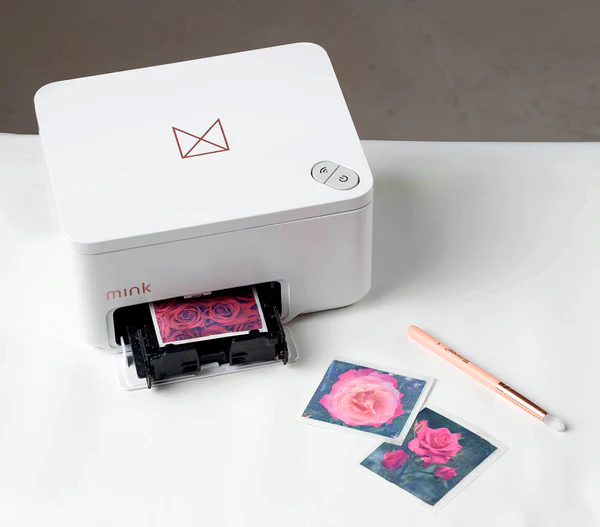
AI in beauty: A strategic opportunity for forward-looking brands
From ultra-personalized virtual try-ons to real-time skin tone and face shape analysis, AI is driving measurable outcomes for brands that embrace it early.
Whether you’re looking to reduce returns, improve customer experience, or create more inclusive product journeys, the tools are here, and the competition is already using them.
Phygital experiences, powered by technologies like AR and AI, are quickly becoming the standard in beauty retail. As digital and physical touchpoints continue to merge, brands that invest now will be best positioned to meet customer expectations and lead the next wave of innovation.
Don’t hesitate to contact Arbelle to learn how we can support your goals.
Frequently asked questions
1. How is AI being used in beauty?
AI is being used across the beauty industry to power virtual try-ons, personalize product recommendations, analyze skin tone and face shape, and even assist in sustainable product formulation. These tools help brands offer a more tailored, efficient, and engaging customer experience, both online and in-store.
2. What is beauty AI?
Beauty AI refers to the use of artificial intelligence technologies in the cosmetics and skincare industry. It includes features like AR makeup simulations, AI shade matching, skin diagnostics, face shape detection, and predictive analytics for product development and marketing. Arbelle is one such beauty tech provider offering advanced beauty AI solutions tailored to brand needs.
3. What is the future of AI in the beauty industry?
The future of AI in beauty is centered on hyper-personalization, inclusivity, and innovation. We’re seeing a shift toward more data-driven product recommendations, AI-powered sustainability tools, and technologies like 3D printing and generative AI for personalized skincare and makeup. For brands, this means more efficient product development, smarter inventory decisions, and stronger customer engagement.
4. How is AI changing beauty standards?
AI has the potential to challenge outdated beauty norms by recognizing and celebrating a wider range of skin tones, face shapes, and personal styles. When designed inclusively, AI tools like Arbelle’s help brands support more diverse beauty journeys – empowering consumers to define beauty on their own terms rather than fitting into a limited ideal.
5. Is it difficult to integrate Arbelle’s tools into our existing website or app?
Arbelle’s beauty AR & AI solutions are designed to integrate seamlessly with e-commerce platforms, mobile apps, and even in-store systems. Our team provides full support for implementation, ensuring a fast, smooth onboarding process that aligns with your brand’s tech infrastructure.
Get started with AI
Ready to redefine your brand’s beauty journey with cutting-edge AI? Connect with us today, and let’s shape the future of beauty, together!
